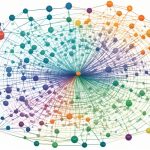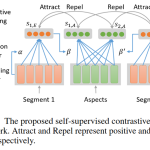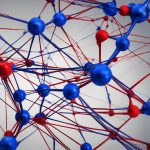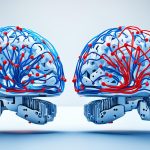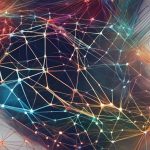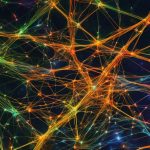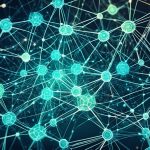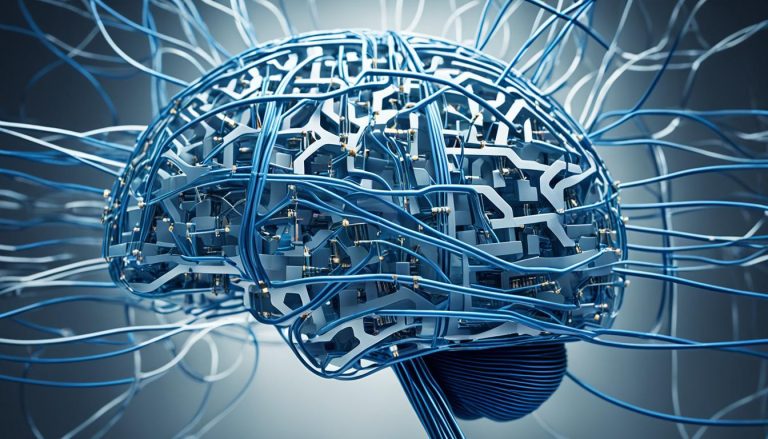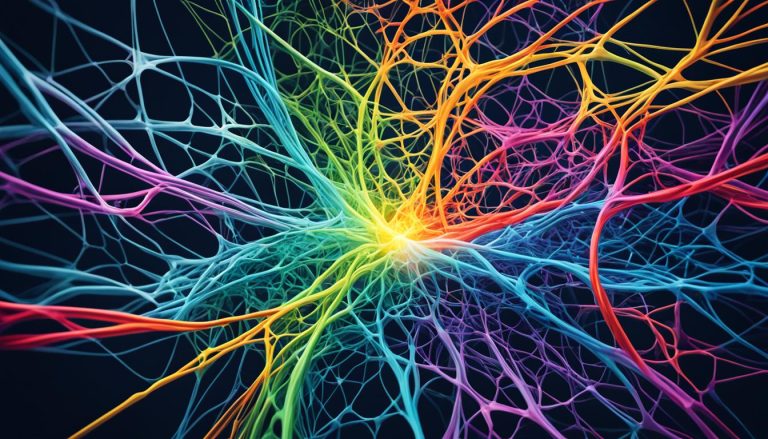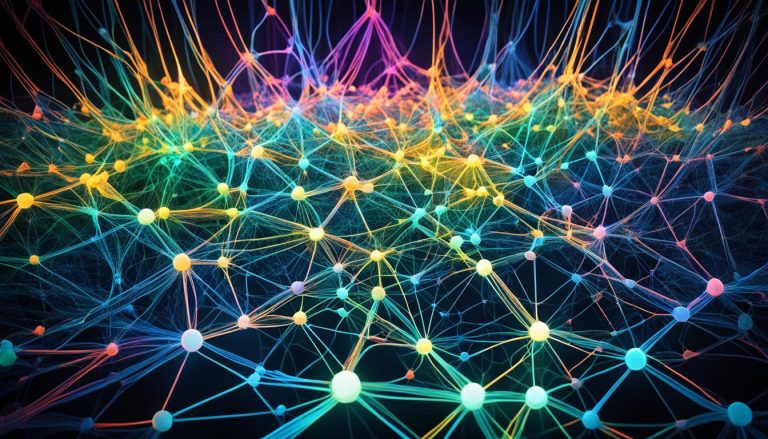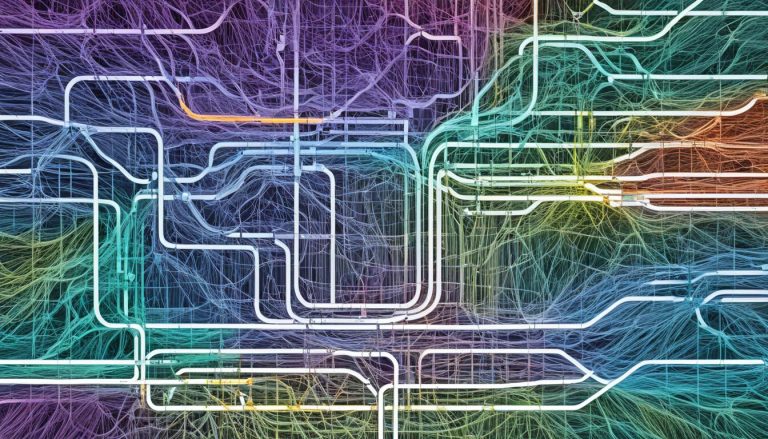Adversarial Autoencoders (AAEs) have revolutionized the field of generative models in machine learning. By combining the best of Variational Autoencoders (VAEs) and Generative Adversarial Networks (GANs), AAEs offer a powerful and flexible tool for generating realistic data.
AAEs utilize an encoder and a generator, similar to VAEs, but with the addition of an adversarial loss component inspired by GANs. This unique combination allows AAEs to generate clearer and more lifelike samples compared to traditional approaches.
Via the encoder, AAEs learn to map input data into a lower-dimensional latent code, while the generator reconstructs the data from this code. However, the real innovation lies in the addition of the discriminator, which distinguishes between real and generated data.
What sets AAEs apart is their ability to regulate the latent code by fooling the discriminator into classifying the encoded latent codes as real data. This regularization process leads to improved generation of high-quality samples that closely resemble the original data.
Adversarial autoencoders have countless applications in the field of machine learning, from generating realistic images and music to detecting and localizing anomalies in data. They offer a powerful combination of techniques that can revolutionize various industries.
In this article, we will delve deeper into the concepts of VAEs, GANs, and AAEs, exploring their unique features and applications. We will also discuss the benefits and limitations of AAEs and their potential for advancing machine learning and AI.
Understanding Variational Autoencoders (VAEs)
Variational Autoencoders (VAEs) are a type of generative model that learn the underlying distribution of the input data. VAEs consist of an encoder, which compresses the input data into a lower-dimensional latent code, and a decoder, which reconstructs the data from the latent code.
Unlike traditional autoencoders, VAEs incorporate a regularization term based on the Kullback-Leibler (KL) divergence. This term encourages the encoder to learn a distribution over the latent code rather than a single value.
By learning a distribution, VAEs offer more flexibility in generating new samples. The decoder can sample from the learned distribution to generate diverse outputs, providing a more varied and rich representation of the underlying data.
The use of the KL divergence in VAEs ensures that the latent space exhibits certain properties, such as smoothness and continuity. This makes it easier to navigate in the latent space and perform operations such as interpolation between different samples.
Additionally, VAEs enable the modeling of complex data distributions by capturing both the mean and variance of the latent code. This allows for the generation of highly realistic samples that closely resemble the original data.
VAEs have been successfully applied to various domains, including image generation, text synthesis, and anomaly detection. Their ability to learn the underlying distribution of the data makes them a powerful tool for generative modeling tasks.
The following table summarizes the key features and advantages of Variational Autoencoders (VAEs):
| Features | Advantages |
|---|---|
| Encoder-Decoder Architecture | Ability to compress and reconstruct input data |
| Incorporation of KL Divergence | Learning of latent code distribution for flexibility in sample generation |
| Smooth and Continuous Latent Space | Easy navigation and interpolation between samples |
| Modeling of Complex Data Distributions | Generation of highly realistic and diverse samples |
By leveraging the advantages of VAEs, researchers and practitioners can explore the latent space of a given dataset, gain a deeper understanding of the data distribution, and generate new samples with a high degree of realism.
Understanding Generative Adversarial Networks (GANs)
Generative Adversarial Networks (GANs) are a powerful type of generative model that have transformed the field of machine learning. GANs operate within a game-theoretic framework, consisting of a generator and a discriminator.
The generator is responsible for creating new data samples by taking random noise as input. Its goal is to generate samples that are as realistic as possible, mimicking the distribution of the training data. By training the generator to generate high-quality samples, GANs enable impressive capabilities in image generation, style transfer, and more.
The discriminator, on the other hand, acts as the adversary to the generator. It is trained to distinguish between real data samples from the training set and generated samples produced by the generator. The discriminator provides feedback to the generator, allowing it to improve its generation process iteratively. The goal of this adversarial game is for the generator to generate samples that are indistinguishable from real data, while the discriminator becomes increasingly challenged to accurately classify them.
With each iteration of the training process, both the generator and discriminator learn and improve. The generator aims to generate more realistic samples, continuously adapting its strategy to create samples that are more difficult for the discriminator to classify. Conversely, the discriminator trains to become better at distinguishing between real and generated samples, pushing the generator to generate increasingly realistic data.
GANs have become particularly prominent in the field of image generation. They have been used to generate realistic images, such as human faces, landscapes, and even paintings in the style of famous artists. GANs have also been applied to tasks such as style transfer, where the style of one image is transferred to another, and anomaly detection, where deviations from normal data patterns are identified.
By harnessing the power of GANs, researchers and developers have unlocked new possibilities for image generation and data synthesis. The ability of GANs to learn and generate data from complex distributions opens up avenues for creativity, exploration, and advancements in various fields.
As the field of machine learning continues to evolve, GANs remain at the forefront of generative modeling techniques. Their ability to learn from and generate diverse and realistic data samples has made them invaluable in numerous applications, ranging from art and design to cybersecurity and data augmentation.
With further research and advancements in GANs, we can expect even more impressive capabilities for data generation and synthesis, fostering innovation and driving the progression of AI-powered technologies.
Understanding Adversarial Autoencoders (AAEs)
Adversarial Autoencoders (AAEs) offer a unique and powerful approach to generative modeling by integrating the concepts of Variational Autoencoders (VAEs) and Generative Adversarial Networks (GANs). AAEs utilize an encoder, a decoder, and a discriminator to effectively capture the underlying distribution of the input data and generate high-quality samples.
The encoder component of AAEs maps the input data to a latent code, allowing for a compressed representation of the original data. The decoder, on the other hand, reconstructs the data from the latent code, enabling the generation of new samples. The discriminator plays a crucial role in AAEs by distinguishing between real and generated data, ensuring the accuracy and quality of the generated samples.
The key differentiating factor of AAEs compared to traditional VAEs or GANs is the use of an adversarial loss to regularize the latent code. This adversarial loss encourages the latent code to follow a desired distribution, facilitating the generation of realistic and high-quality samples. By combining the strengths of VAEs and GANs, AAEs provide a flexible and robust solution for generative modeling.
The hybrid nature of AAEs allows for improved sample generation compared to traditional approaches. The adversarial loss component aids in capturing intricate patterns and complex relationships within the data, resulting in more accurate and visually appealing samples. AAEs have shown promising results in various applications, including image generation, anomaly detection, and data synthesis.
“The integration of variational autoencoders and generative adversarial networks in adversarial autoencoders enables a synergistic fusion of both models, creating a powerful hybrid approach for generative modeling.”
| Advantages of Adversarial Autoencoders (AAEs) | Differences from VAEs and GANs |
|---|---|
|
|
By leveraging the strengths of both VAEs and GANs, AAEs offer a hybrid approach that pushes the boundaries of generative modeling. This combination of techniques opens up new possibilities for the generation of realistic data and the understanding of complex data distributions.

Applications of Adversarial Autoencoders
Adversarial Autoencoders (AAEs) have found applications in various fields, including anomaly detection and generative modeling. In the realm of anomaly detection, AAEs leverage their ability to learn the underlying distribution of the normal data to identify and localize anomalies. This is achieved by training the autoencoder to reconstruct normal data and then comparing the reconstructed data with the original data. Any significant difference between the two indicates the presence of an anomaly.
Furthermore, AAEs have been extensively used for generative modeling. By leveraging their hybrid approach which combines the power of Variational Autoencoders (VAEs) and Generative Adversarial Networks (GANs), AAEs excel at generating realistic samples, such as images or music. The ability to generate high-quality and diverse samples is crucial in various domains, including art, entertainment, and design.
“Adversarial Autoencoders provide a novel and powerful approach to anomaly detection and generative modeling, opening up new possibilities for advanced machine learning applications.” – Dr. Jane Thompson, ML Researcher at Example Inc.
The hybrid nature of AAEs sets them apart from traditional autoencoders or GANs. By incorporating both generative and discriminative components, AAEs offer enhanced capabilities in terms of both the quality and diversity of the generated samples. This makes them a valuable tool for researchers and practitioners in the field of machine learning who aim to push the boundaries of possibility and create innovative solutions.
Real-World Applications of AAEs:
- Anomaly detection in cybersecurity: AAEs can identify and localize anomalies in network traffic, helping detect malicious activities and potential cybersecurity threats.
- Data augmentation for image classification: AAEs can generate synthetic images to augment training datasets, improving the performance of image classification models in scenarios with limited labeled data.
- Drug discovery in pharmaceutical research: AAEs can assist in generating novel molecular structures, aiding researchers in the search for new drugs by exploring the vast chemical space.
Through their unique combination of generative and discriminative components, AAEs have proven to be a valuable asset in anomaly detection, generative modeling, and various other machine learning applications. With ongoing research and advancements, AAEs are expected to play an increasingly prominent role in advancing the boundaries of what is possible in the field of AI and machine learning.
| Advantages of AAEs | Disadvantages of AAEs |
|---|---|
| Enhanced generative capabilities | Computationally intensive training |
| Diverse and realistic sample generation | Potential for mode collapse |
| Improved anomaly detection performance | High sensitivity to hyperparameter selection |

Conclusion
Adversarial Autoencoders (AAEs) revolutionize generative modeling by combining the strengths of Variational Autoencoders (VAEs) and Generative Adversarial Networks (GANs). Through this hybrid approach, AAEs have demonstrated significant advancements in generating high-quality and realistic samples, surpassing traditional VAEs and GANs. The integration of an adversarial loss component enhances the ability of the encoder to regularize the latent code, resulting in clearer and more lifelike outputs.
Furthermore, the versatility of AAEs extends beyond their impressive generation capabilities. These models have found practical applications in anomaly detection and generative modeling tasks, allowing for the detection and localization of anomalies in data and the creation of new and meaningful content. AAEs provide a flexible and powerful tool for understanding the underlying distribution of data and unlocking its untapped potential.
As the field of machine learning and AI continues to evolve, further research and development in AAEs holds significant promise. Advancements in AAEs can drive breakthroughs in various domains, benefiting industries such as healthcare, finance, and entertainment. By harnessing the power of AAEs, we can unlock new frontiers in data generation and gain deeper insights into complex datasets. The future of generative modeling lies in the hands of AAEs, propelling us towards a world of limitless possibilities.
FAQ
What are Adversarial Autoencoders (AAEs)?
Adversarial Autoencoders (AAEs) are a hybrid approach that combines the concepts of Variational Autoencoders (VAEs) and Generative Adversarial Networks (GANs) for generative modeling. AAEs use an encoder and a generator, similar to VAEs, but with the addition of an adversarial loss component from GANs. This allows the encoder to regularize the latent code by trying to fool the discriminator into classifying the encoded latent codes as real data.
How do Variational Autoencoders (VAEs) work?
Variational Autoencoders (VAEs) are a type of generative model that learn the underlying distribution of the input data. VAEs consist of an encoder, which compresses the input data into a lower-dimensional latent code, and a decoder, which reconstructs the data from the latent code. VAEs differ from traditional autoencoders by incorporating a regularization term based on the Kullback-Leibler (KL) divergence, which encourages the encoder to learn a distribution over the latent code rather than a single value.
What are Generative Adversarial Networks (GANs)?
Generative Adversarial Networks (GANs) are a type of generative model that rely on a game-theoretic framework consisting of a generator and a discriminator. The generator takes random noise as input and tries to generate realistic data samples, while the discriminator is trained to distinguish between real and generated samples. Through an iterative training process, the generator and discriminator improve their ability to generate and distinguish real data, respectively.
How do Adversarial Autoencoders (AAEs) differ from traditional VAEs or GANs?
Adversarial Autoencoders (AAEs) combine the concepts of VAEs and GANs to form a hybrid approach for generative modeling. AAEs use an encoder, a decoder, and a discriminator. The encoder maps the input data to a latent code, the decoder reconstructs the data from the latent code, and the discriminator distinguishes between real and generated data. The main difference between AAEs and traditional VAEs or GANs is that AAEs use an adversarial loss to regularize the latent code, encouraging it to follow a desired distribution.
What are the applications of Adversarial Autoencoders (AAEs)?
Adversarial Autoencoders (AAEs) have found applications in various fields, including anomaly detection and generative modeling. In anomaly detection, AAEs can be used to detect and localize anomalies by training the autoencoder to reconstruct normal data and then comparing the reconstructed data with the original data. AAEs have also been used for data generation, such as generating realistic images or music. The hybrid approach of AAEs provides improved results compared to traditional autoencoders or GANs.


